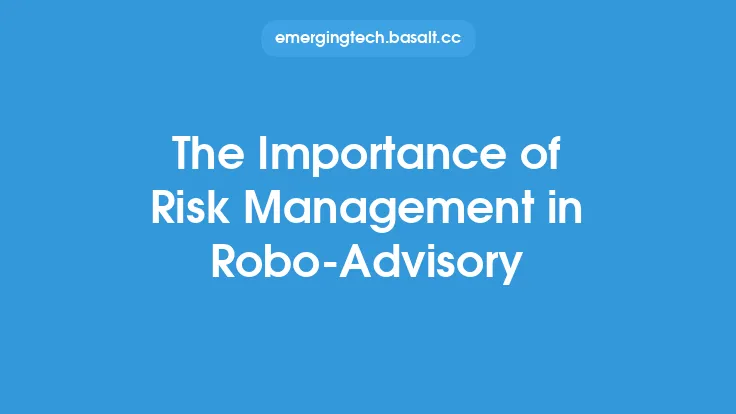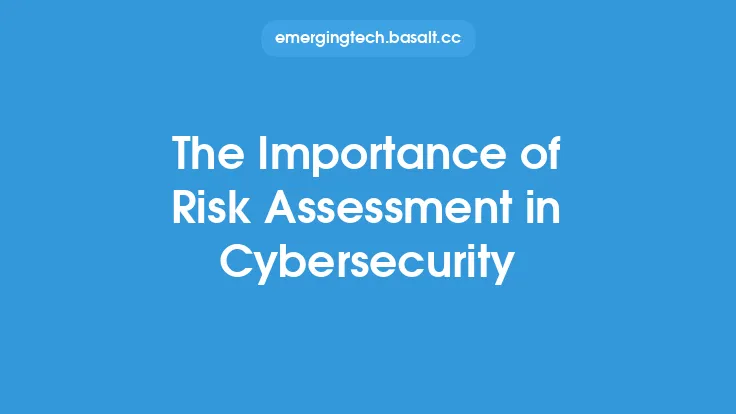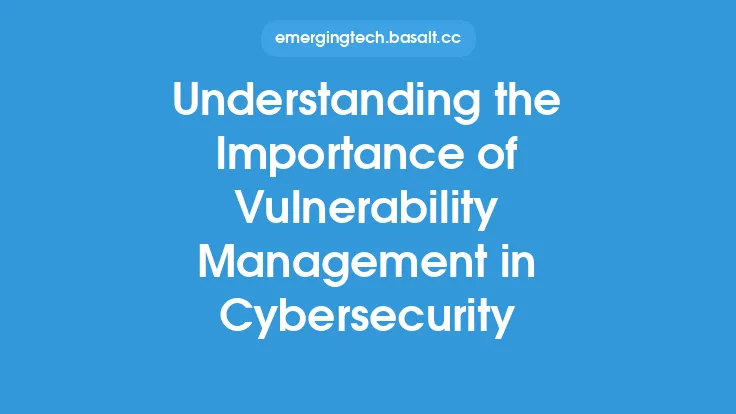Cryptocurrency has become a significant player in the global financial landscape, offering a new and exciting way to invest and conduct transactions. However, the cryptocurrency market is known for its volatility, and the lack of regulation and oversight can make it a high-risk environment for investors. As such, it is essential to have a solid understanding of cryptocurrency risk management to navigate this complex and ever-changing market.
Introduction to Cryptocurrency Risk Management
Cryptocurrency risk management refers to the process of identifying, assessing, and mitigating potential risks associated with investing in or using cryptocurrencies. This includes market risk, credit risk, operational risk, and regulatory risk, among others. Effective risk management is crucial to minimizing losses and maximizing gains in the cryptocurrency market. It involves a combination of strategies, including diversification, hedging, and risk assessment, to manage exposure to potential risks.
Types of Cryptocurrency Risks
There are several types of risks associated with cryptocurrencies, including market risk, credit risk, operational risk, and regulatory risk. Market risk refers to the potential for losses due to fluctuations in the market value of a cryptocurrency. Credit risk refers to the potential for losses due to the failure of a counterparty to meet their obligations. Operational risk refers to the potential for losses due to inadequate or failed internal processes, systems, and people, or from external events. Regulatory risk refers to the potential for losses due to changes in laws, regulations, or government policies.
Strategies for Cryptocurrency Risk Management
There are several strategies that can be used to manage cryptocurrency risks, including diversification, hedging, and risk assessment. Diversification involves spreading investments across different asset classes, sectors, or geographic regions to minimize exposure to any one particular risk. Hedging involves taking a position in a security that offsets the risk of another security. Risk assessment involves identifying and evaluating potential risks to determine their likelihood and potential impact.
Best Practices for Cryptocurrency Risk Management
There are several best practices that can be used to manage cryptocurrency risks, including setting clear investment goals, diversifying investments, monitoring and adjusting the portfolio regularly, and staying informed about market trends and regulatory changes. It is also essential to have a solid understanding of the cryptocurrency market and the risks associated with it. Additionally, investors should be cautious of scams and phishing attacks, and should only invest in reputable and well-established cryptocurrencies.
The Role of Technology in Cryptocurrency Risk Management
Technology plays a critical role in cryptocurrency risk management, providing investors with the tools and resources they need to manage their risks effectively. This includes risk management software, portfolio management tools, and market data analytics. These tools can help investors to identify and assess potential risks, and to develop strategies to mitigate them. Additionally, technology can help to automate many of the processes involved in risk management, making it easier and more efficient to manage risks.
Common Mistakes to Avoid in Cryptocurrency Risk Management
There are several common mistakes that investors make when it comes to cryptocurrency risk management, including failing to diversify investments, failing to monitor and adjust the portfolio regularly, and failing to stay informed about market trends and regulatory changes. Investors should also be cautious of over-leveraging, which can amplify losses as well as gains. Additionally, investors should be aware of the risks associated with margin trading and should only use leverage when they have a solid understanding of the risks involved.
Conclusion
In conclusion, cryptocurrency risk management is a critical component of investing in or using cryptocurrencies. It involves identifying, assessing, and mitigating potential risks to minimize losses and maximize gains. By understanding the types of risks associated with cryptocurrencies, using effective risk management strategies, and following best practices, investors can navigate the complex and ever-changing cryptocurrency market with confidence. Additionally, technology can play a critical role in cryptocurrency risk management, providing investors with the tools and resources they need to manage their risks effectively. By avoiding common mistakes and staying informed about market trends and regulatory changes, investors can ensure that they are well-equipped to manage their cryptocurrency risks and achieve their investment goals.





